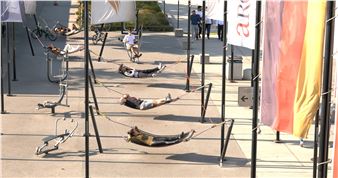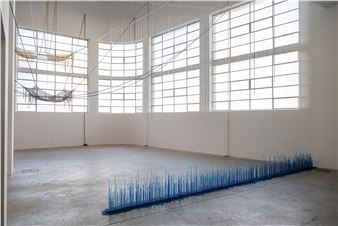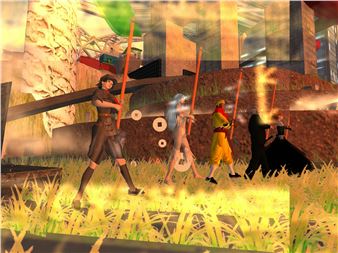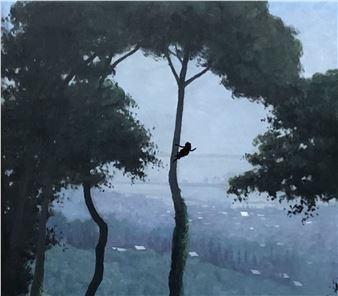Virginia Overton: Material Girl
Virginia Overton (born in Nashville in 1971) creates sculptures from discarded materials. She uses exposed steel girders and wooden beams from buildings, for example, or dismantles disused vehicles and advertising signs. She assembles, screws, and welds the individual parts to create large-scale structures, architectural interventions, or wall objects. For example, a crane truck becomes a fountain sculpture with a playful water cycle. The artist thus references the readymade principle, but draws attention to the signs of wear, history, and original function of the elements used. “A piece of wood remains a piece of wood—even in an art context,” says Overton. This fidelity to materials anchors her works firmly in reality, close to social and functional legibility.
Influenced by post-studio art, as shaped by minimal art, she prefers to work on site, always in relation to the specific exhibition space. Her works combine art-historical awareness and material aesthetics with a reflective approach to ecological, social, and economic issues. Overton attaches great importance to sustainability: many of her sculptures are reversible, the material is reused after the exhibitions and not transported back and forth between continents. Her “do-it-yourself” strategy is based on pragmatism: she does not add new material to the world, but rather new constellations in which organic, synthetic, and mechanical components come together and sharpen our perception. She succeeds in formulating an aesthetic of objectivity that captures the poetic aspects of proportion, gravity, and balance. Her works open up spaces of meaning between construction and deconstruction, between (building) work and art, between function and symbol.
Accompanying the exhibition, the Walther und Franz König publishing house is releasing a publication on the creative processes behind her sculptures, featuring photographs by the artist as well as texts and installation views.
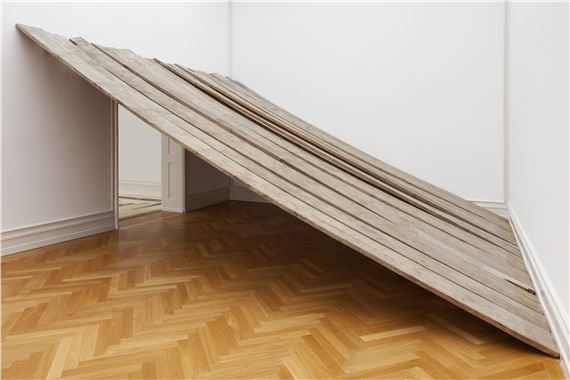
Recommended for you
Virginia Overton (born in Nashville in 1971) creates sculptures from discarded materials. She uses exposed steel girders and wooden beams from buildings, for example, or dismantles disused vehicles and advertising signs. She assembles, screws, and welds the individual parts to create large-scale structures, architectural interventions, or wall objects. For example, a crane truck becomes a fountain sculpture with a playful water cycle. The artist thus references the readymade principle, but draws attention to the signs of wear, history, and original function of the elements used. “A piece of wood remains a piece of wood—even in an art context,” says Overton. This fidelity to materials anchors her works firmly in reality, close to social and functional legibility.
Influenced by post-studio art, as shaped by minimal art, she prefers to work on site, always in relation to the specific exhibition space. Her works combine art-historical awareness and material aesthetics with a reflective approach to ecological, social, and economic issues. Overton attaches great importance to sustainability: many of her sculptures are reversible, the material is reused after the exhibitions and not transported back and forth between continents. Her “do-it-yourself” strategy is based on pragmatism: she does not add new material to the world, but rather new constellations in which organic, synthetic, and mechanical components come together and sharpen our perception. She succeeds in formulating an aesthetic of objectivity that captures the poetic aspects of proportion, gravity, and balance. Her works open up spaces of meaning between construction and deconstruction, between (building) work and art, between function and symbol.
Accompanying the exhibition, the Walther und Franz König publishing house is releasing a publication on the creative processes behind her sculptures, featuring photographs by the artist as well as texts and installation views.
Artists on show
Contact details

Related articles
At Kunst Museum Winterthur, the artistВ retools industrial debris and art-historical fragments into sculpture.

 ARTISTS
ARTISTS









